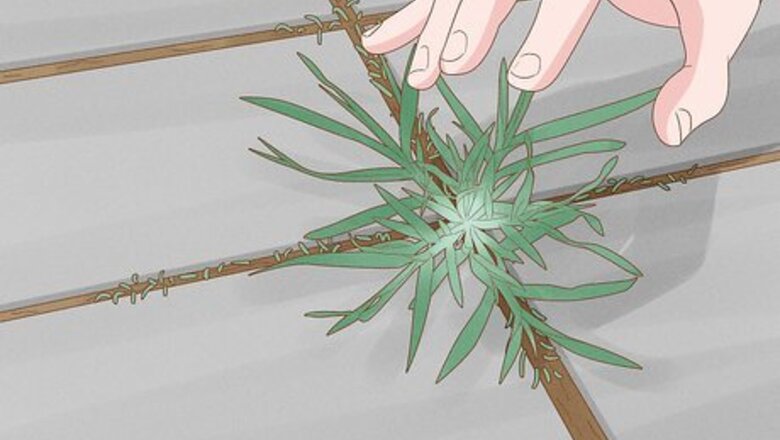
views
Removing Weeds by Hand
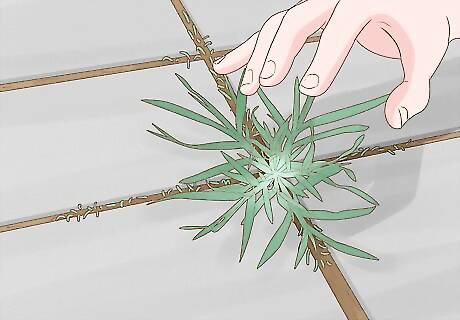
Pull weeds from damp soil. There are many products you can apply to weeds to kill them temporarily, but there is still no more effective and long-lasting way to get rid of weeds than to remove them by hand, as tedious as that can be. In order to remove weeds from your patio, start with wet soil. Either weed your patio right after a heavy rain, or use a garden hose to moisten the soil in the cracks of your patio.
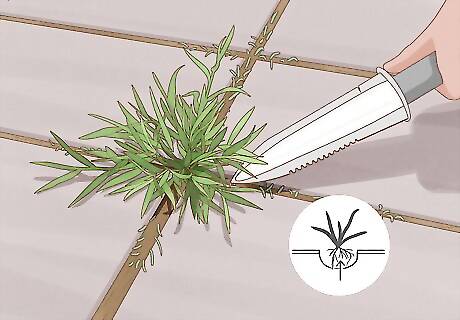
Use tools to get under the roots. If you try to pull the weeds out from the top, you will likely neglect to remove the roots. Instead, you should shimmy a tool into each crack to remove the weed from it. Use the tool to push up from underneath, as you simultaneously pull from the top. In wider cracks, you can use a billhook or crack weeder. In very narrow cracks, you can use a serrated kitchen knife.
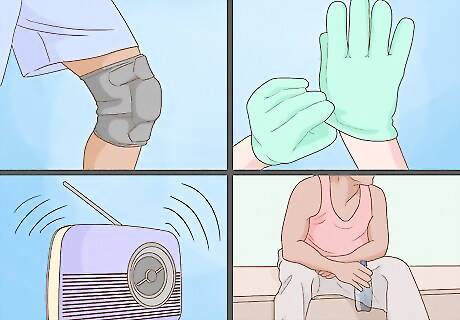
Plan to be there for a while. For even a small to medium-sized patio, this process can take several hours. Rather than allowing yourself to get frustrated, take some steps to make yourself comfortable while you work. Wear comfortable knee pads. Wear tight-fitting gloves with a good grip. Put on some music or a podcast. Take breaks when you get tired.
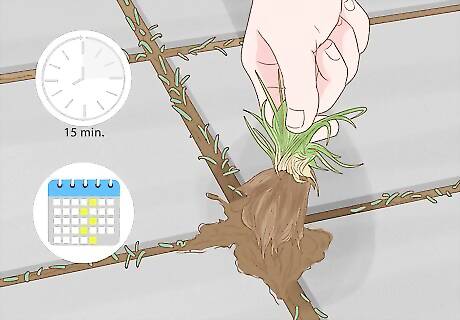
Spend some time each week on upkeep. The bad news is that, although this method is very effective, weeds are persistent little buggers. You will need to do this process again. Fortunately, if you perform a bit of upkeep each week, you can keep weed problems at bay, and avoid the need to make a whole day of weed-removal. For a small to medium-sized patio, just 10 to 15 minutes once a week should help control your weeds.
Killing Weeds with Natural Remedies
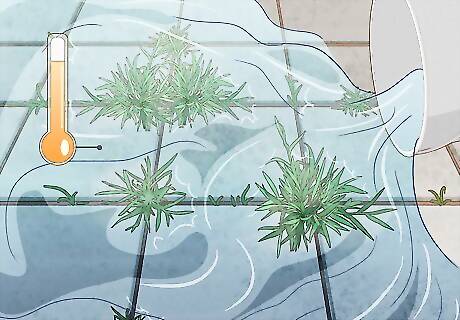
Pour boiling water on weeds. Simple boiling water can kill weeds, and may even prevent the germination of existing seeds. Generously pour boiling water in all of the cracks in your patio. You may need to repeat this method 2 or 3 times to see significant results. Be careful not to burn yourself. You can repeat this method as often as you like. Anytime you boil water for making pasta or canning, toss the extra hot water out onto your patio.
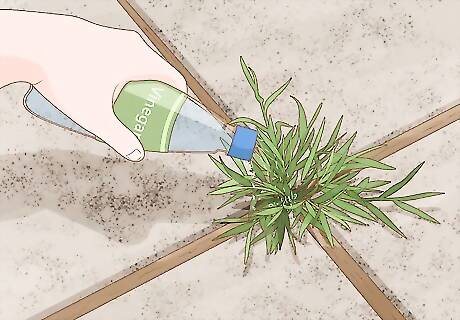
Apply white vinegar to weeds. Vinegar contains acetic acid, which kills vegetation. Regular white vinegar has a concentration of 5% acid, and pickling vinegar has a 7% concentration. Either of these will work well. You can poke holes in the vinegar cap for a handy way to distribute the “weed killer.” You can apply straight vinegar to weeds, or use the following recipe: 1 gallon (3.87 liter) of vinegar (5% or 7% pickling vinegar) + 2 Tbs. (29.5 ml) dish soap + ½ cup (480 ml) salt. This works best when applied during the midday sun. Reapply every 4 to 6 weeks.
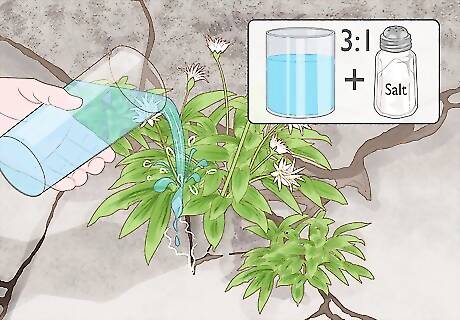
Use salt to kill weeds. Create a saltwater solution that is 3 parts water to 1 part salt, and pour this solution in your patio cracks. Once the weeds begin to die, sprinkle some dry salt in the areas where you see the highest concentration of weeds. If you are not seeing fast enough results, you can increase the concentration of salt in your solution. You can also add a splash of vinegar and a few squirts of dish soap to make this mixture more effective. You can repeat this method every 3 to 6 weeks.
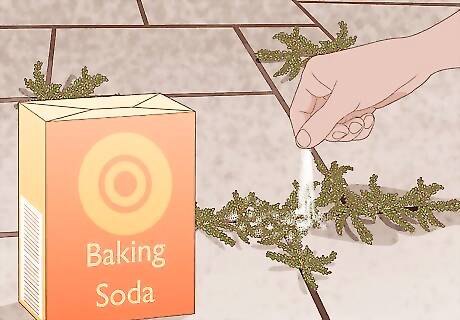
Sprinkle baking soda in cracks. Baking soda is also great for killing weeds. Sprinkle baking soda generously all over your patio, and then use a broom to sweep it into cracks. Finish by spraying your patio down with water. You can apply baking soda after a heavy rain and skip the watering. This method works best in the spring or fall. You can repeat this method every 4 to 6 weeks.
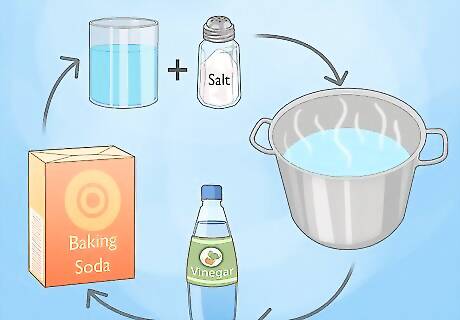
Use a variety of methods. Different species of weeds will be more susceptible to specific methods of weed removal. For best results, you should rotate between methods to keep all potential weeds under control.
Treating Weeds with Chemicals and Heat
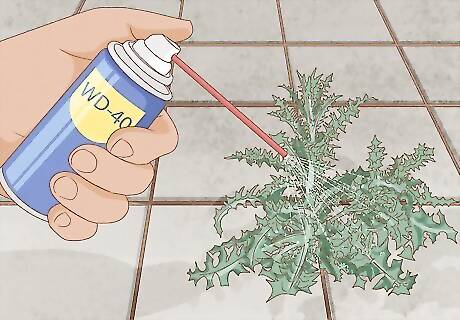
Spray WD-40 on weeds. WD-40 is quite effective at killing weeds, especially thistles. Simply spray and repeat as necessary. You can find this product at your local hardware store.

Put undiluted bleach in between cracks and crevices. Repeat this process two to three times, then simply pull the weeds out. Be careful not to splash any bleach on yourself or surrounding plants.
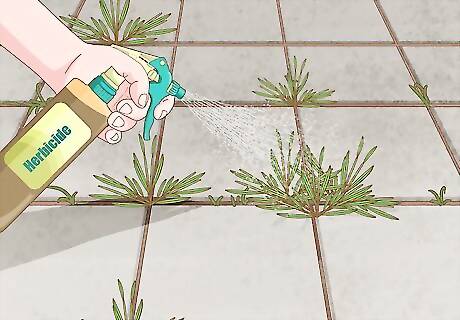
Spray herbicide on weeds. Look for a spray herbicide at your local gardening store for those especially hard-to-kill weeds. Just spray it on any weeds you wish to eliminate and repeat as necessary.
Preventing Weed Growth
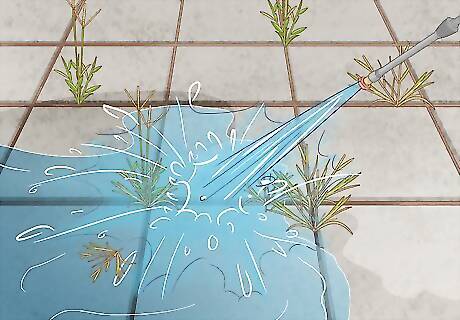
Powerwash the cracks. Once the weeds have been removed, you will want to eradicate any lingering seeds or roots. You can keep your patio weed-free for longer by thoroughly power washing the cracks. Simply direct the spray of your power washer at each crack, hold for 30 seconds to a minute, and move on to the next crack. If you do not own a power washer, you can rent one from a hardware store or rental center.
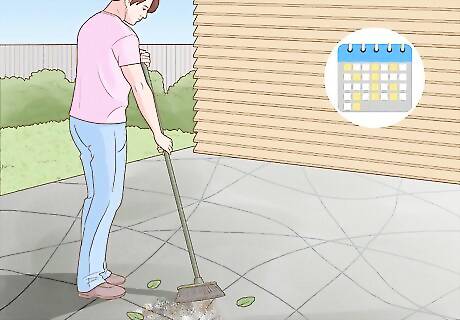
Sweep your patio often. Contrary to how it may seem, weeds do not appear from underneath. Rather, seedlings fall (or blow) onto your patio and make their way down into the cracks. You can prevent seedlings from settling by sweeping your patio a few times per week.
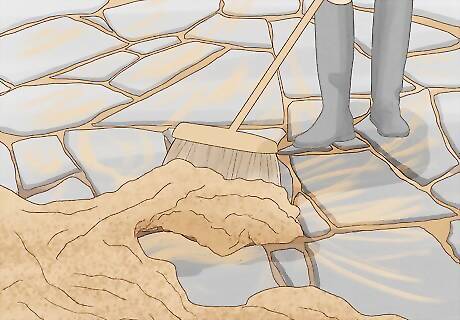
Seal cracks with polymeric jointing sand. Polymeric jointing sand is the best sealant for preventing the growth of weeds on your patio. Simply sweep this powdered sealant into the cracks of your patio (as a finishing coat). Then spray the patio lightly with water, which allows the sealant to bond. Wait 12 to 24 hours before hanging out on your patio. This sealant should last for two seasons. EXPERT TIP Maggie Moran Maggie Moran Home & Garden Specialist Maggie Moran is a Professional Gardener in Pennsylvania. Maggie Moran Maggie Moran Home & Garden Specialist Try a joint stabilizer on paving stones. Maggie Moran, a horticulturalist, says, “You can seal paving stones, though most professionals recommend a joint stabilizing sealer. This liquid soaks into the stone surface as well as the sand in the joints.”
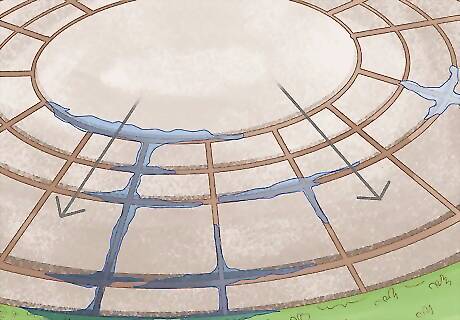
Ensure proper drainage. Weeds can spring up anywhere, but if your patio is getting more than it’s fair share, it may mean excess water is sitting in between your patio cracks. Your patio should be sloped to allow for proper drainage. If it isn’t, consider consulting a professional for advice.




















Comments
0 comment